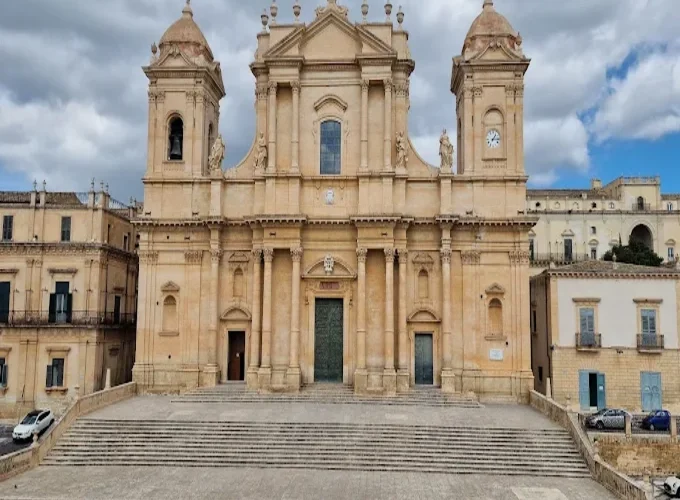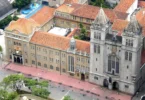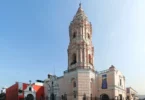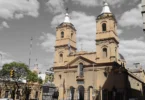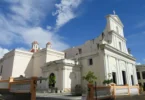Introduction
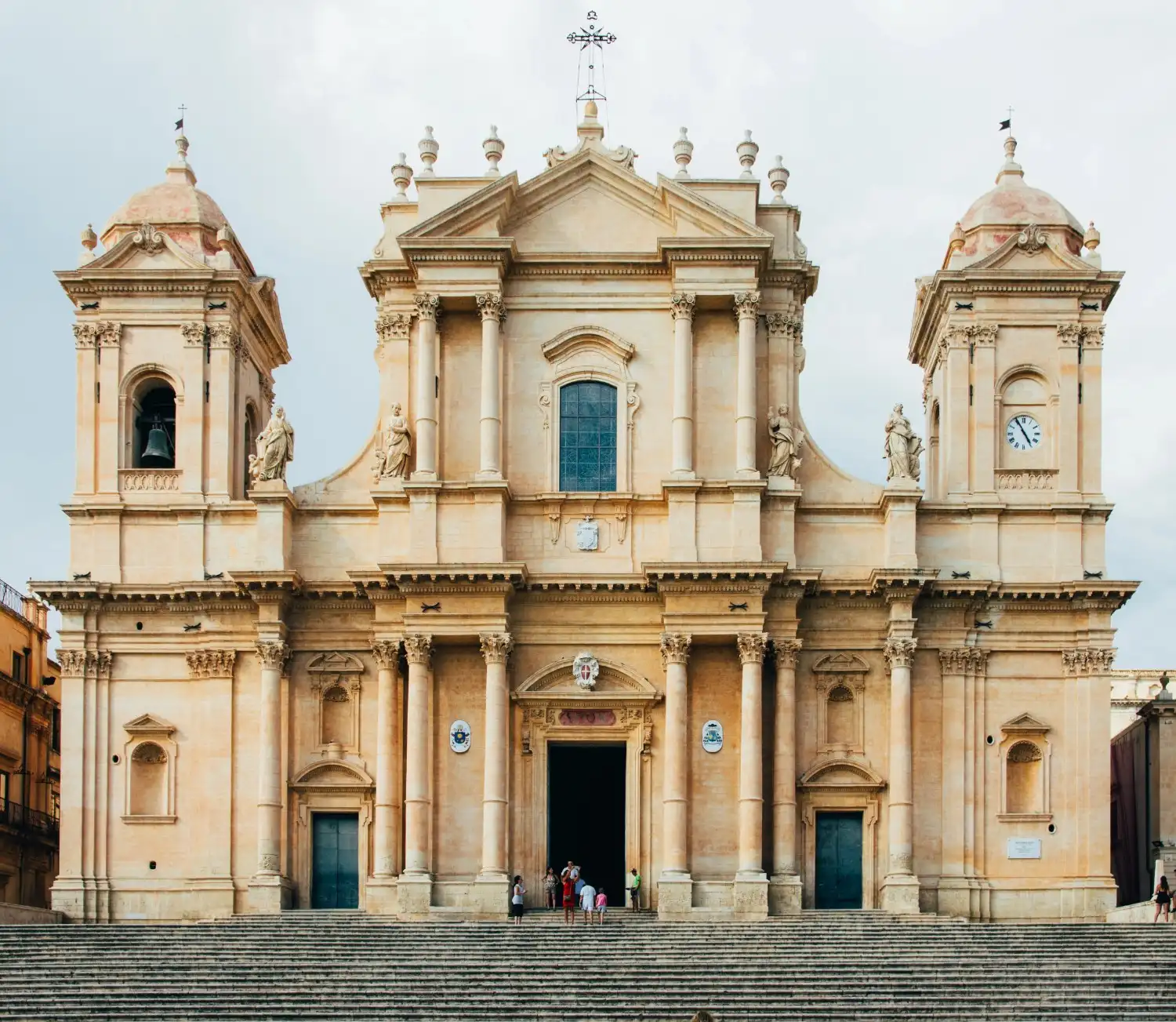
The Cathedral of San Nicolò, located in the heart of Noto, Sicily, is one of the most significant Catholic places of worship in the region. It also serves as the episcopal seat of the Diocese of Noto. The cathedral is dedicated to Saint Nicholas of Myra, the patron saint of the city, and is renowned for its grandeur and historical significance. The church stands at the top of a prominent staircase, offering a stunning view of the surrounding area, and its imposing façade is a striking example of Sicilian Baroque architecture. Construction of the cathedral began in 1694, and it was officially completed in 1703, when it was solemnly consecrated for worship. The architectural style reflects the Baroque movement, characterized by its ornate decoration and dramatic use of space. Over the centuries, the interior of the cathedral underwent several modifications. Significant changes were made in the late 19th century, most notably the construction of a new dome, designed by Cassone of Noto, which reshaped the cathedral’s interior and gave it its current form.
The interior of the cathedral is equally impressive, featuring three naves and housing numerous valuable works of art, many of which originate from Ancient Noto, the former location of the city before it was destroyed in the 1693 earthquake. One of the most revered relics in the cathedral is the silver urn containing the mortal remains of San Corrado Confalonieri, a key figure in the religious history of the region. On 21 January 2012, the cathedral was elevated to the status of a minor basilica by Pope Benedict XVI, a recognition of its importance to both the local community and the wider Catholic Church. Despite facing a major setback in 1996, when the cathedral’s dome collapsed due to structural damage caused by a 1990 earthquake, the cathedral was rebuilt and reopened in 2007. The restoration of the dome preserved the cathedral’s historical charm while ensuring its structural integrity for future generations. Today, the Cathedral of San Nicolò stands as a symbol of Noto’s rich cultural and religious heritage, attracting visitors from around the world who come to admire its architectural beauty and historical significance.
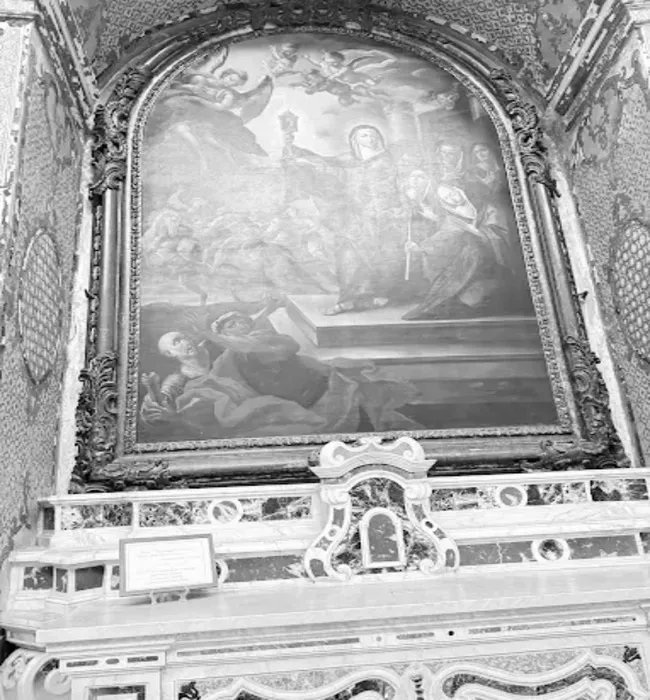
18th Century to 1996: Architectural Evolution and Challenges
The Cathedral of San Nicolò in Noto, Sicily, stands as a testament to Baroque and Neo-Classical architectural styles, evolving over centuries from its initial construction. The cathedral’s façade, designed by Rosario Gagliardi, embodies a striking Baroque structure with two lateral bell towers, which draw inspiration from notable European churches, such as the Mother Church of Palma di Montechiaro (1666), Saint-Roch Church in Paris, and Versailles Parish Church. The architectural details of the bell towers, with pilasters that vary from base to top and curled tympanums, showcase influences from Catania’s 18th-century designs. The central window’s curvilinear tympanum and “ears” borrow from the designs of Andrea Pozzo, drawing further parallels with Francesco Paolo Labisi’s creations in Noto.
Construction began in 1694, following the destruction of the previous church in the 1693 earthquake. The building was completed in 1776 under the supervision of Bernardo Labisi. Over the course of its development, the church underwent several renovations and restorations, including the rebuilding of the dome, which collapsed multiple times due to earthquake damage. A neo-classical dome replaced the earlier version, and the cathedral’s layout continued to evolve, with changes to the altar, organ, and roof structure. By the 1950s, several renovations altered the cathedral’s structure significantly. The original wooden pitched roof was replaced by a heavy latero-cement roof, which later contributed to the 1996 collapse. Other modifications included the addition of trompe-l’œil decorations and adjustments to the high altar and the organ. These changes, though intended to restore and preserve the cathedral, were not always successful.
The Collapse of 1996: Destruction and Immediate Aftermath
On March 13, 1996, disaster struck when the central part of the cathedral collapsed due to serious structural weaknesses. Following the 1990 earthquake, structural flaws became evident, but efforts to address them were not promptly implemented. The central nave’s support pillars, filled with unseasoned river stones instead of solid squared blocks, led to a catastrophic failure. The collapse involved the right nave, central nave, right transept, and the dome itself. The collapse affected 1,000 square meters and resulted in a volume loss of approximately 6,000 cubic meters. Fortunately, no lives were lost, as the church was not open to the public at the time. Following the collapse, a comprehensive assessment and clearing of debris began in January 2000. The extensive damage required meticulous restoration, which was carried out by local artisans trained in ancient construction techniques. The reconstruction was aimed at preserving the church’s historical essence, using traditional materials and modern seismic methods for enhanced stability.
Reconstruction and Restoration: 2000-2007
Reconstruction work began with the rebuilding of the right nave’s pillars, using squared stone blocks and traditional techniques without reinforcing concrete. This approach was replicated on the left side, where the original pillars had also collapsed. The central nave, right nave, small domes, buttresses, and arches were restored to their former splendor. The roof was restructured with wooden trusses and Sicilian tile covering, in line with the original design. The vaults were constructed using reeds and plaster, maintaining traditional craftsmanship.
The dome, which had been a central feature of the cathedral’s original design, was rebuilt almost identical to its predecessor, with only minor adjustments made to the base for added strength. Carbon fiber was integrated into the masonry to increase the cathedral’s resistance to future earthquakes, ensuring its long-term stability. The work of restoration and reconstruction lasted for 11 years. On June 18, 2007, the cathedral was officially reopened to the public, marking the end of a long and painstaking restoration process. The ceremony was attended by Prime Minister Romano Prodi and other prominent figures from both regional and national government.
Post-Reconstruction: New Pictorial and Structural Enhancements
Following the cathedral’s reopening, efforts to enhance its interior continued. In 2009, new pictorial decorations began on the pendentives of the dome. The Russian artist Oleg Supereko was commissioned to create the fresco of “The Pentecost” in the dome, as well as the paintings of the four Evangelists in the pendentives. In addition to the frescoes, Francesco Mori, a Tuscan artist, created stained glass windows for the dome’s drum, providing a colorful addition to the structure. A significant part of the restoration involved the creation of a new altar, cross, and lectern made from silvered bronze and Sicilian jasper by sculptor Giuseppe Ducrot. The new altar was consecrated in January 2011 during a ceremony attended by local and national authorities, including Vittorio Sgarbi and Minister Stefania Prestigiacomo.
Recent Developments and Official Recognition
The cathedral continued to be a focal point for religious and cultural events, with visits from important dignitaries such as President Sergio Mattarella, who visited the cathedral on April 8, 2016, alongside Vittorio Sgarbi. The Cathedral of San Nicolò remains one of the finest examples of Sicilian Baroque architecture, with its grand design and significant religious history. Through years of construction, damage, and restoration, it stands as a symbol of resilience and dedication to preserving historical and cultural heritage.
Architecture of Basilica of Our Lady of the Snows, Copertino, Italy
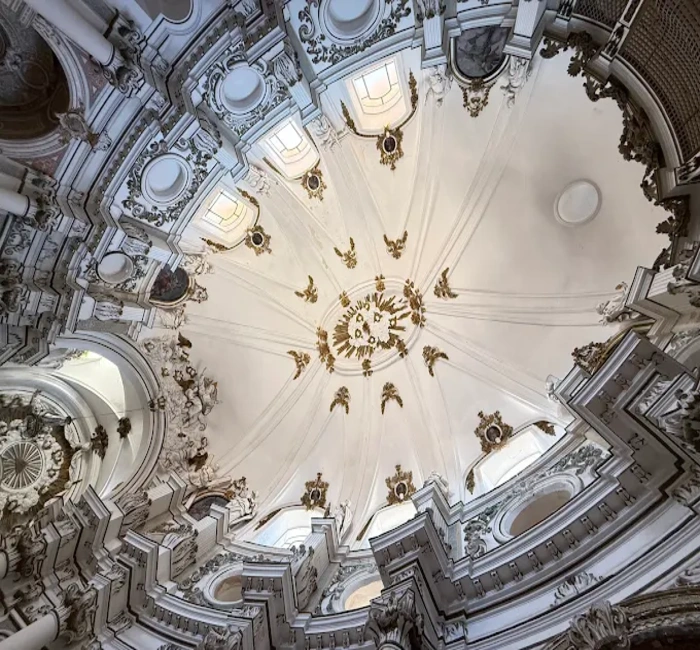
Architectural style: Romanesque architecture, Baroque architecture.
Exterior Architecture
The exterior of Noto Cathedral is a striking example of late Baroque architecture, though it also integrates eclectic elements with notable neoclassical aspirations. The façade is made of soft limestone, which contributes to its elegant, light appearance. A scenic staircase, composed of three ramps, leads up to the church, and while the staircase dates back to the 18th century, it was renovated at the beginning of the 19th century to enhance its grandeur. The cathedral’s façade follows a typology with two lateral towers, a design rooted in the local Sicilian architectural tradition dating back to the time of the Normans. This architectural style is also influenced by similar French Baroque compositions from the 18th century, which were an inspiration for the architects of the time. The façade is crowned by four statues representing the Evangelists, sculpted in 1796 by Giuseppe Orlando. These statues sit atop the building and offer a dramatic visual heightening to the structure.
At the base of the façade, there are three imposing portals, framed by slender Corinthian columns. The central portal, made of bronze, features scenes from the life of Saint Corrado Confalonieri, the patron saint of Noto. This artwork was created in 1982 by the Sicilian sculptor Giuseppe Pirrone. The overall design of the façade, with its grand entrance and towers, creates a magnificent first impression that emphasizes both the monumental scale and the religious significance of the cathedral.
Interior Architecture
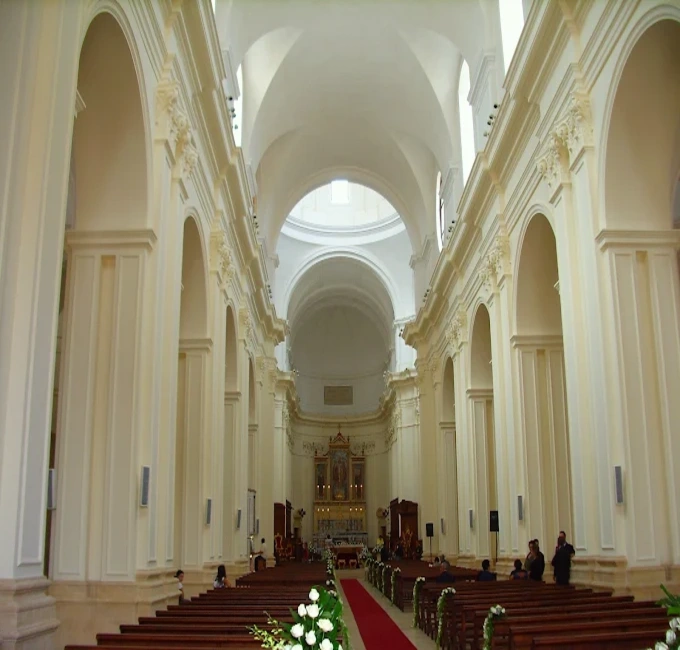
The interior of Noto Cathedral is designed in the shape of a Latin cross, with three naves, the central one being the largest. Over the years, the interior has undergone several transformations, with its current layout taking shape by 1899 when the Chapel of the Blessed Sacrament was constructed. Prior to the middle of the 20th century, the interior was relatively unadorned, but between 1950 and 1956, the cathedral was frescoed by Nicola Arduino from Turin and Armando Baldinelli from Bologna. This work was part of a vow made by the city’s mayor during World War II to honor Saint Corrado Confalonieri. Following the devastating collapse in 1996, the cathedral’s interior was left stripped of much of its iconographic apparatus. As a result, it was returned to a simpler, more austere appearance until it could be reconstructed. The restoration has preserved the spirit of the original design while incorporating contemporary elements in the art and decoration. The apse houses two bishop’s thrones in carved and gilded wood (18th-19th centuries) and a wooden choir. The high altar, made of polychrome marble, features a triptych created by Arduino, depicting Saint Nicholas in the center, Saint Corrado to the left, and Saint William to the right. Other notable elements in the apse include a marble coat of arms for Bishop Angelo Calabretta set into the floor.
Side Aisles and Notable Artworks
The side aisles of the Cathedral of Noto contain a remarkable collection of artworks that survived the 1996 collapse, offering a glimpse into the church’s rich artistic heritage. In the right aisle, visitors can admire a polychrome marble baptismal font, along with several paintings, including the Immaculate Conception with Holy Martyrs (18th century), Adoration of the Shepherds by Giovanni Bonomo (1783), and Delivery of the Keys to Saint Peter by Giuseppe Patania (1827). A striking wooden statue of Saint Nicholas from the 18th century also graces the right transept. The left aisle is home to more significant pieces, including the Miracle of Saint Francis of Paola (attributed to Costantino Carasi, 18th century) and Panic of Sicily by Raffaele Politi (1809). Additionally, a polychrome wooden sculpture of the Sacred Heart by Francesco Biangardi (19th century) and a marble Saint Michael from the Gagini school (16th century) stand out. The left transept also features a Crucifix, while the chapel at the end of the left nave, dedicated to the Blessed Sacrament, boasts intricate stucco decorations from 1899, completing the aisle’s artistic and spiritual significance.
Contemporary Art and New Additions
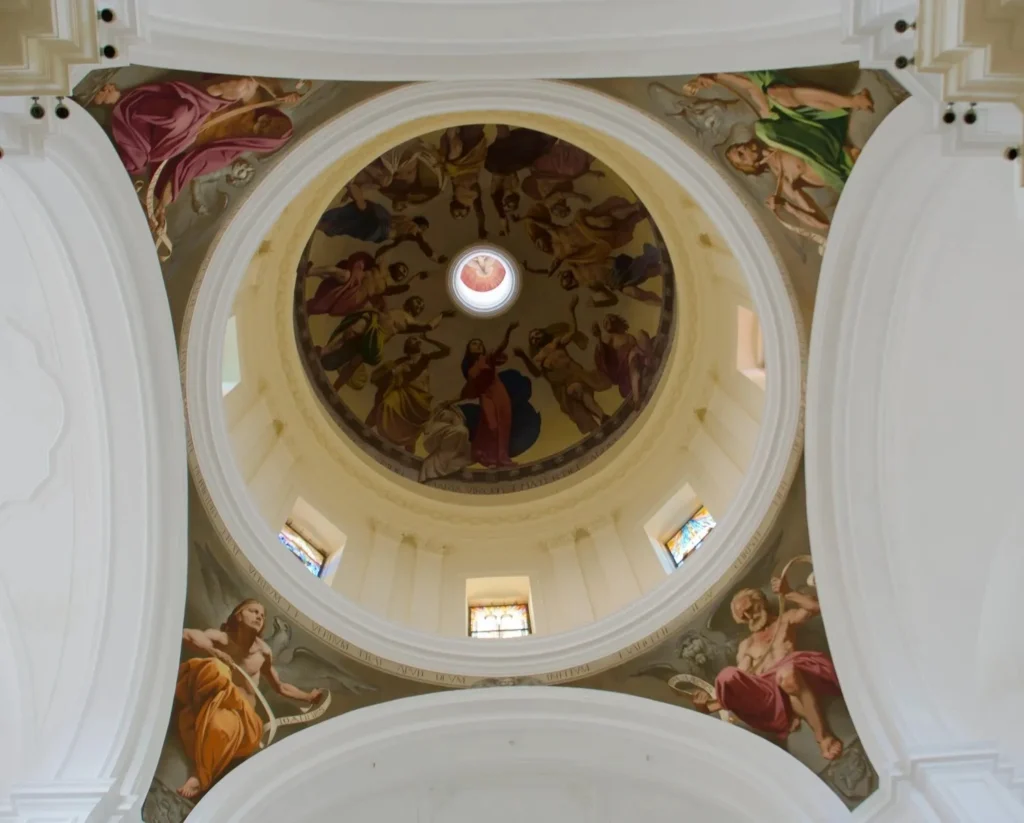
Following the reconstruction after the collapse, numerous contemporary artists were commissioned to contribute new works to the cathedral, enriching the sacred space with modern artistic interpretations. The dome, previously painted with “The Glory of San Corrado” by Arduino, now features a 110 m² polylobed canvas by Lino Frongia, depicting the Assumption of the Madonna and the four cardinal virtues. The pendentives of the dome are adorned with the four evangelists, while the ceiling features a fresco of the Pentecost, painted by Russian artist Oleg Supereko in 2011. In the presbytery area, the altar, pulpit, and cross are made of silvered bronze with Sicilian jasper bases, created by Giuseppe Ducrot. The apse basin showcases a fresco of Christ Pantocrator by Bruno d’Arcevia, flanked by Saint John the Baptist and the Virgin Mary. Below them, the doctors of the church, including Saint Augustine and Saint Ambrose, are depicted. Bruno d’Arcevia also painted “The Waiting for the Last Judgment” or “Etimasia” in the vault of the presbytery, symbolizing the awaited return of Christ.
Stained Glass and Sculptures
A new set of stained glass windows was designed by Francesco Mori, including nine windows in the central nave and additional windows in the transepts and apse. These windows depict the patron saints of the cities within the Diocese of Noto, and some of the original windows that were destroyed in the collapse were restored. In 2013, twelve white plaster sculptures of Serpottian ancestry were installed in the niches along the side aisles. These sculptures, each measuring 1.8 meters in height, represent the apostles, with additional figures of Saints Francis of Assisi and Catherine of Siena placed near the main entrance. These sculptures reflect the rich Baroque style with intricate draperies and expressive details that enhance the spiritual atmosphere of the cathedral.
The Iconographic Commission
A consultative commission, appointed by the Presidency of the Council of Ministers and the National Department of Civil Protection, oversaw the creation of the cathedral’s new iconographic and decorative elements. The commission commissioned renowned contemporary artists to execute frescoes, oil paintings, and sculptures for the dome and transepts. Key themes included the central figure of Christ Pantocrator, the four doctors of the church, and Saint Corrado Confalonieri, the patron saint of the city of Noto. The competition for these works was part of a national cultural initiative, with some sketches exhibited at the 54th Venice Biennale in 2011. This mix of contemporary and historical art provides a unique fusion of sacred traditions and modern artistic expressions, offering visitors a multifaceted visual experience within the cathedral.
Feast Day
Feast Day : 06 December
The feast day of Saint Nicholas of Myra at the Cathedral Basilica of St. Nicholas in Noto, Italy, is celebrated on December 6th. This date marks the feast day of Saint Nicholas, the patron saint of the cathedral and the city of Noto. The day is observed with various religious events, processions, and festivities honoring the saint’s legacy.
Church Mass Timing
Monday to Saturday : 7:00 PM
Sunday : 10:30 AM
Church Opening Time:
Monday to Saturday : 9:00 AM – 08:00PM
Sunday : 9:00 AM – 08:00PM
Contact Info
Cathedral Basilica of St. Nicholas, Noto, Italy
Piazza del Municipio, 96017 Noto SR, Italy
Phone : +39 0931 317580
Accommodations
Connectivities
Airway
Cathedral Basilica of St. Nicholas, Noto, Italy, to Aviosuperficie di Avola “Gallina”, Acquedotto, distance between 22 min (13.2 km) via Strada Provinciale 15 Noto – Avola/SP15.
Railway
Cathedral Basilica of St. Nicholas, Noto, Italy, to Avola Railway Station, distance between 17 min (9.3 km) via SS 115 Sud Occidentale Sicula/SS115.

